
John French Sloan in 1891
John Sloan was born in Lock Haven, Pennsylvania in the late summer of 1871, the son of an amateur artist and occasional business man. Five years later Sloan his family moved to Philadelphia and in 1884 he started at the prestigious Central High School. A few years later he was forced to leave early to help support his family and in 1888 he began working for a bookseller and print dealer. Soon teaching himself how to etch with the aid of Philip Gilbert Hamilton’s The Etcher’s Handbook. At the age of twenty Sloan began drawing classes at the Spring Garden Institute and started as a freelance commercial artist.
Not long after he was given a staff job in the art department of the Philadelphia Inquirer all the while studying drawing at the Pennsylvania Academy of Fine Arts. In 1895 he started working for the Philadelphia Press.
Around the turn of the century, under the influence of the artist Robert Henri, Sloan started painting more seriously producing portraits and landscapes from his Philadelphia neighborhood. Around this time Sloan with others started what would later be called the Ash Can School – an artistic movement that became best known for portraying scenes from the poorer districts of New York City.These artists thought it was almost their duty to tell truths about ht city and the often harsh conditions of modern life that was often ignored by the ‘suffocating influence of the Genteel Tradition in the visual arts.
The origins of the name “Ash Can school” came from a complaint found in a magazine called The Masses alleging that there were too many “pictures of ashcans and girls hitching up their skirts on Horatio Street.” The Ashcan School of artists have also been known as “The Apostles of Ugliness” and consisted, other than John Sloan, Robert Henri (1865–1929), George Luks (1867–1933), William Glackens (1870–1938), John Sloan(1871–1951), and Everett Shinn (1876–1953). Some of them met studying together under the renowned realist Thomas Anshutz at the Pennsylvania Academy of the Fine Arts others met in the two main newspaper offices of Philadelphia where they worked as illustrators. The Ash Can school was probably at its height around 1910 but started to fade away before WW1 when European modernism burst onto the American art scene and the group’s realism in the face of fashionable cubism and fauvism began to look old fashioned and out of touch.
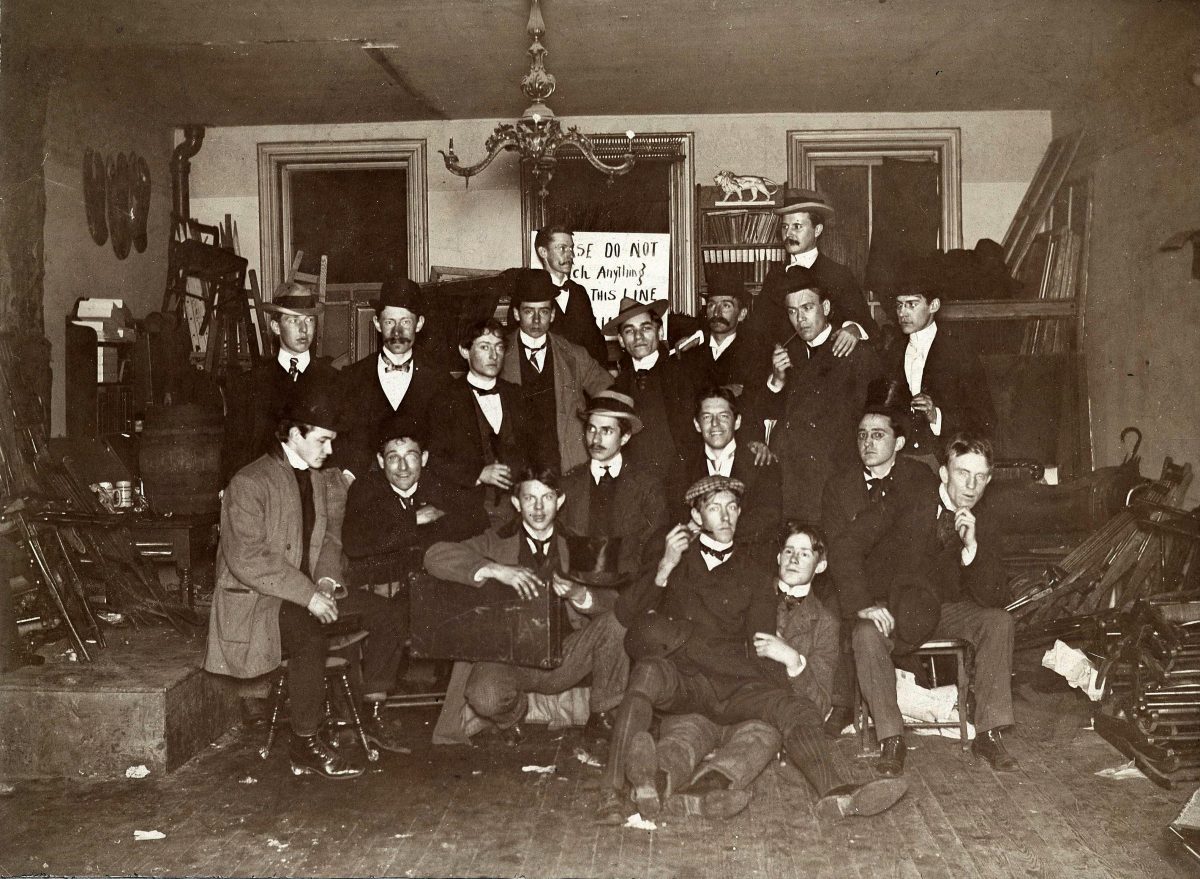
Ashcan School artists and friends at John French Sloan’s Philadelphia Studio, 1898
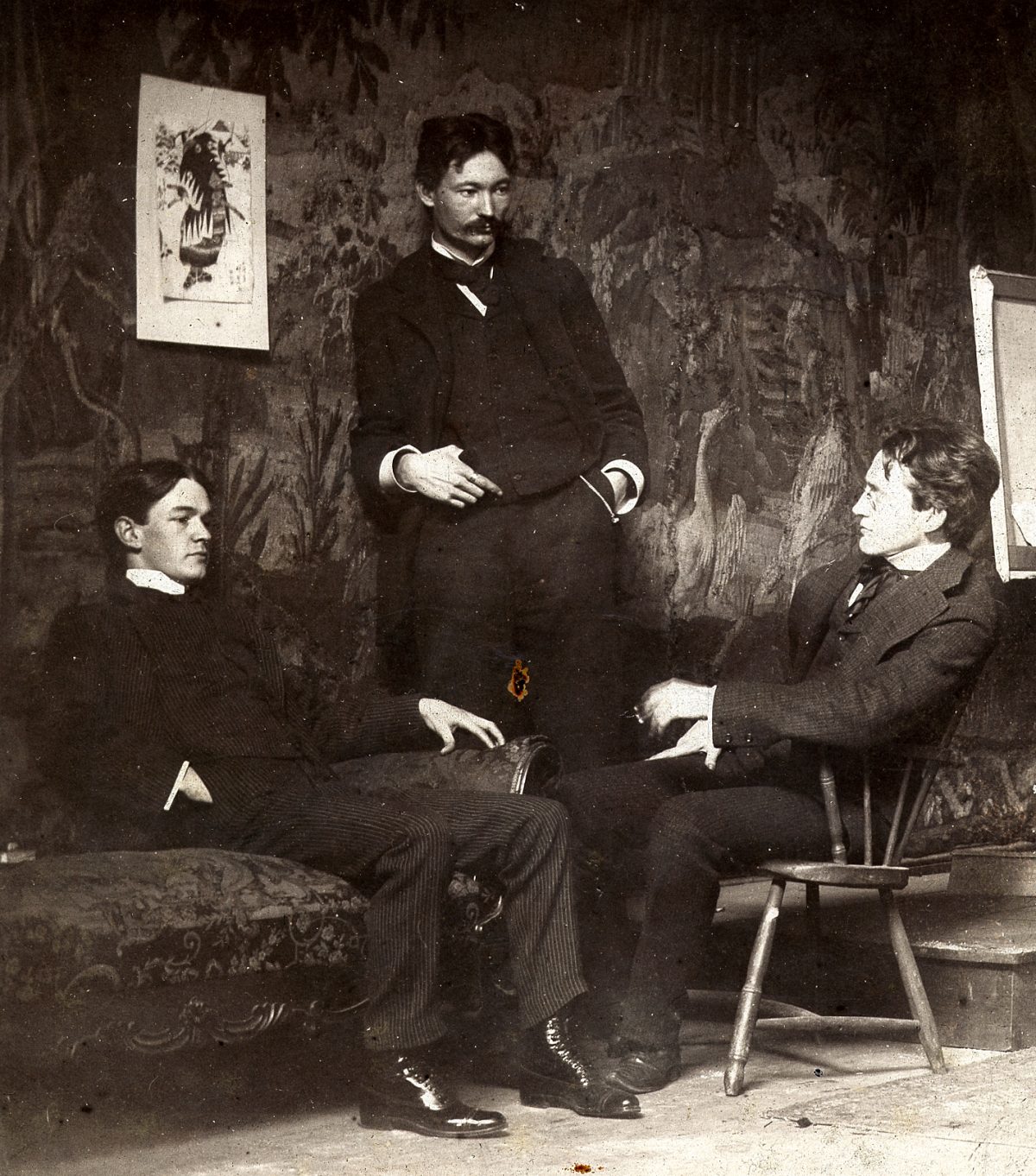
Portraits of Artists from Archives of American Art, Smithsonian Institution
In 1901 the rather shy Sloan married Anna Maria Wall, known as Dolly. They undoubtedly loved each other but it was always a challenge for Sloan to cope with her dependence on alcohol and her occasional forays into prostitution mostly to pay for more drink. Although Dolly worked in a department store by day, Sloan had, in fact, met her in a brothel three years previously. The marriage struggled through many crises relating to Dolly’s alcoholism and associated mental illness that continued until she died in 1943.
You can buy prints of his work and more in the Shop.
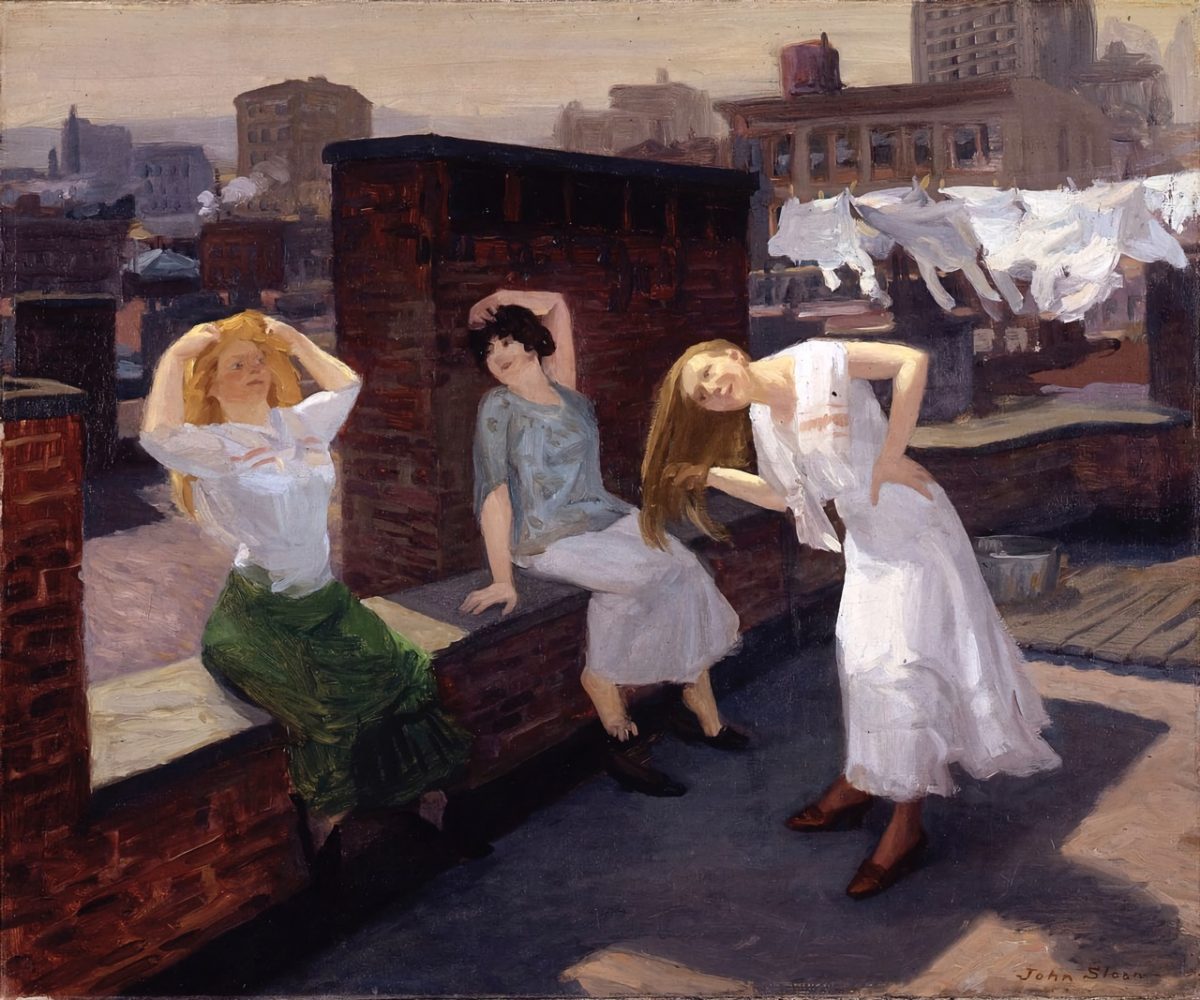
Sunday Women, Drying Their Hair – John Sloan – 1912
While in New York Sloan painted realistic scenes of Greenwich Village and the Tenderloin district but often continued to work as a freelance illustrator to help pay the bills. In 1908 he participated in the historic exhibition of The Eight at Macbeth Gallery. Sloan came to be regarded as a central figure in the Ash Can school and was noted for his painterly style and dark palette. In 1910 he helped organize the Exhibition of Independent Artists and also joined the Socialist Party. From 1912 to 1916 he was art director for the radical publication The Masses, and he remained committed to left-wing causes throughout his life.
In 1944, after the death of his first wife, Sloan married his student Helen Farr. Sloan died of cancer in Hanover, New Hampshire, on September 7, 1951.
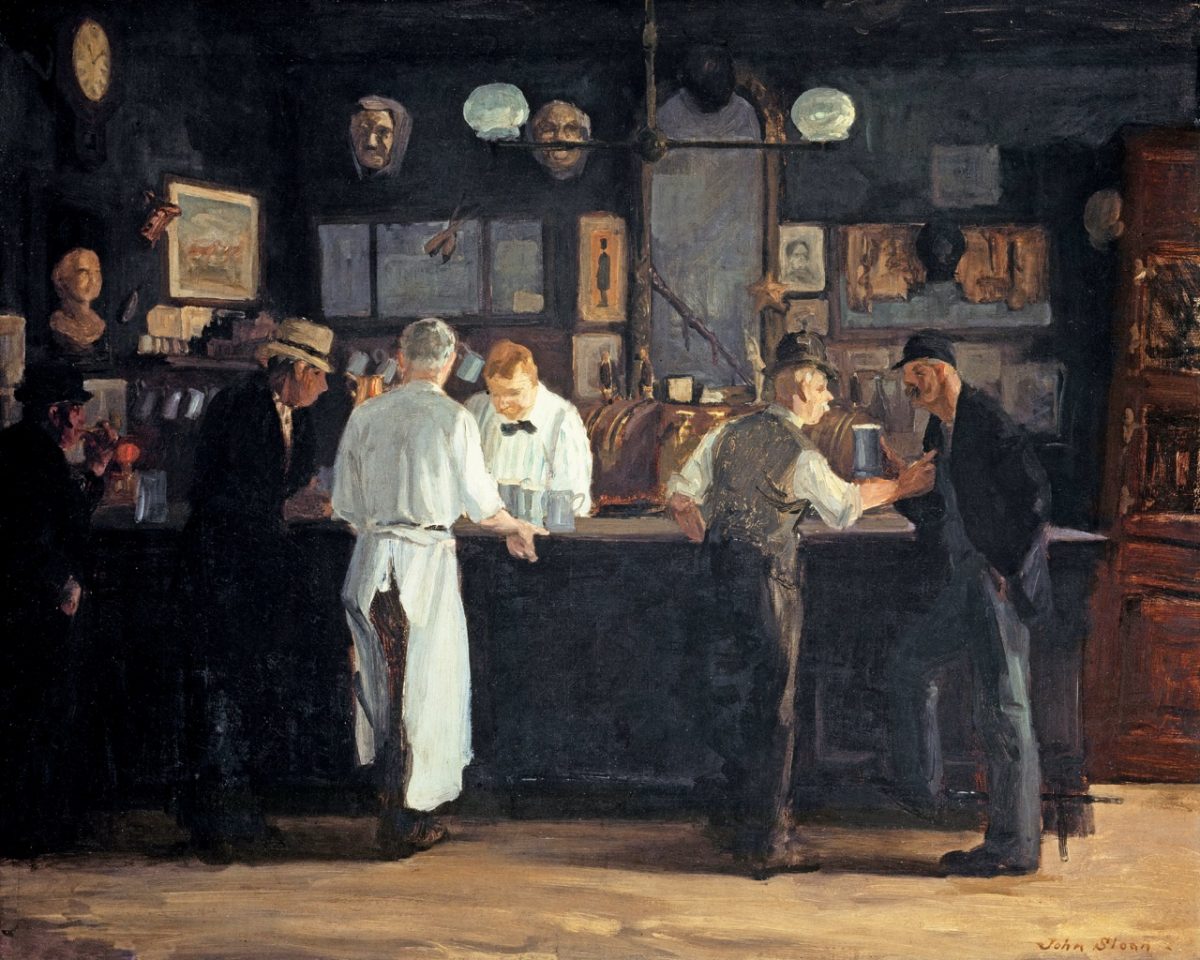
McSorley’s Bar painted in 1912
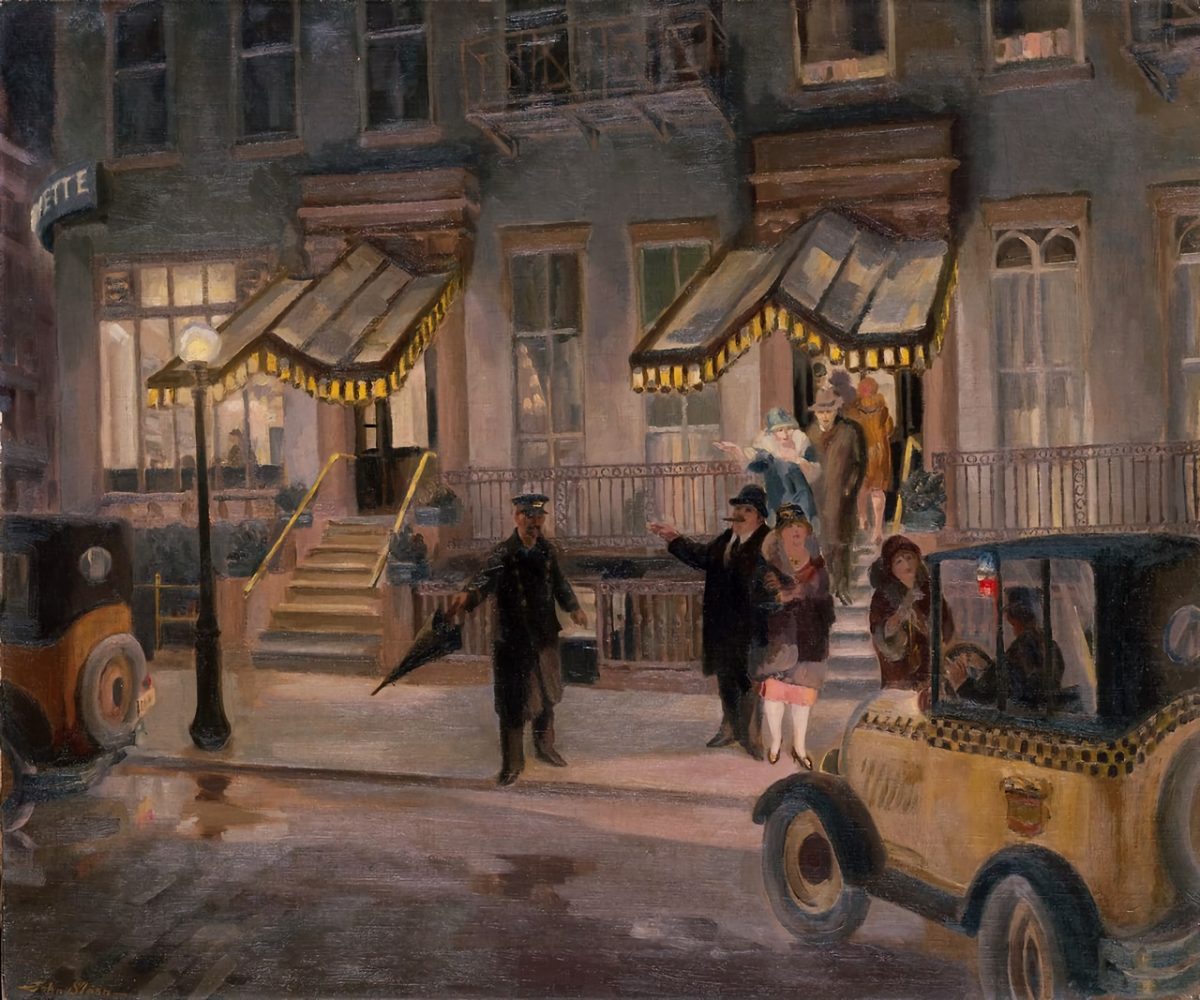
The Lafayette – John Sloan – 1927 – A favorite haunt for Sloan and his friends was the Hotel Lafayette, located at Ninth Street and University Place in New York’s Greenwich Village.
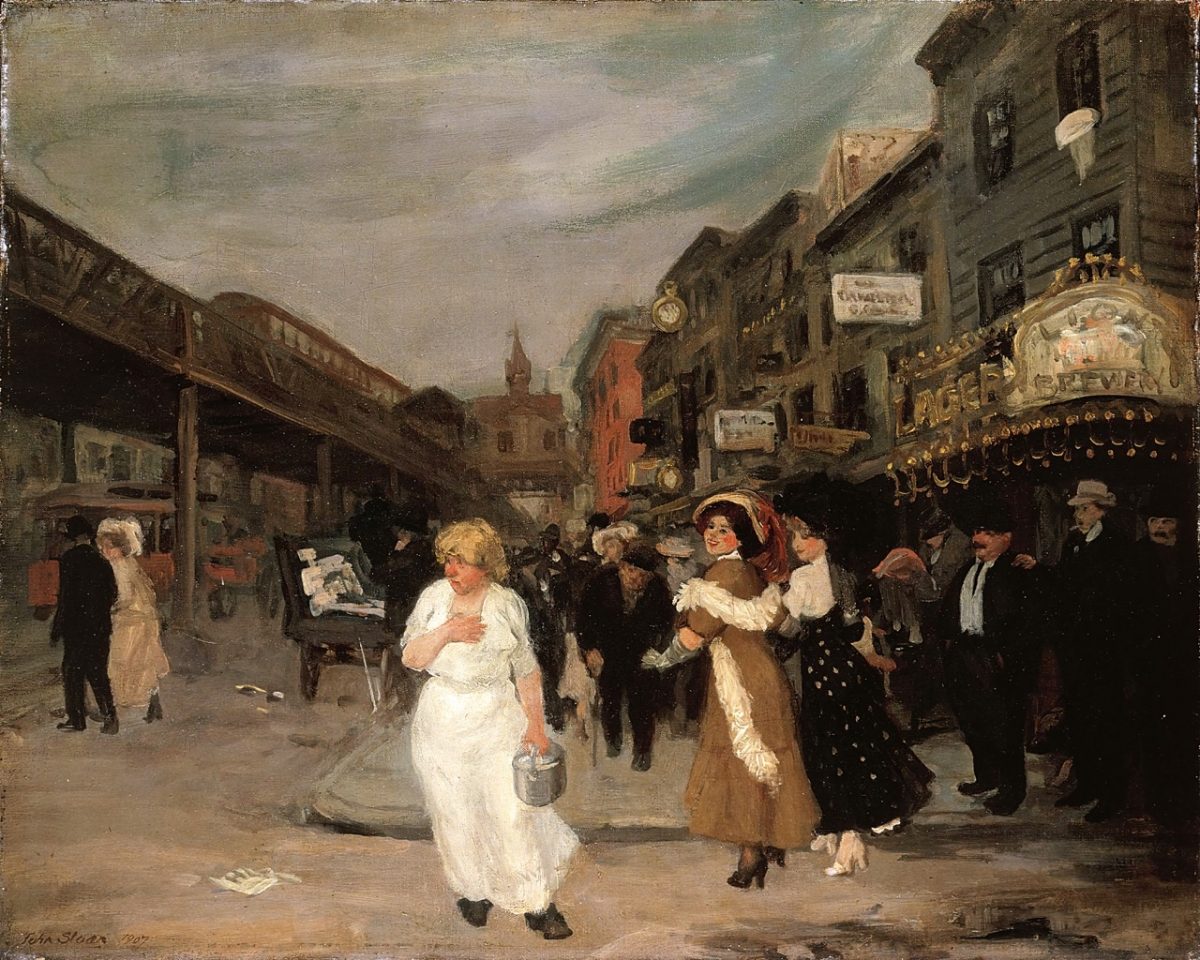
Sixth Avenue and Thirtieth Street, New York City – John Sloan -1907

Sun and Wind on the Roof – John Sloanv- 1915
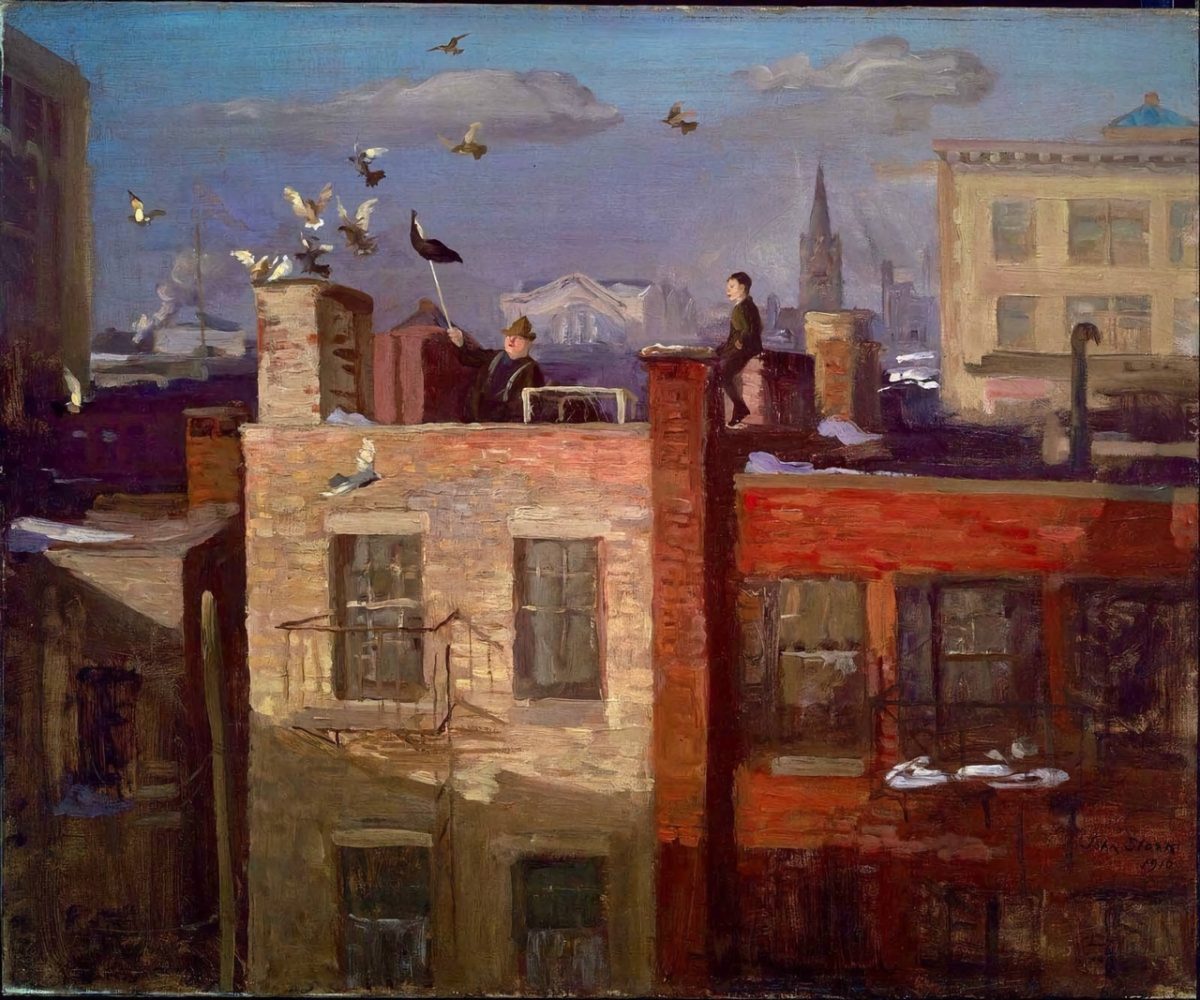
Pigeons – John Sloan – 1910
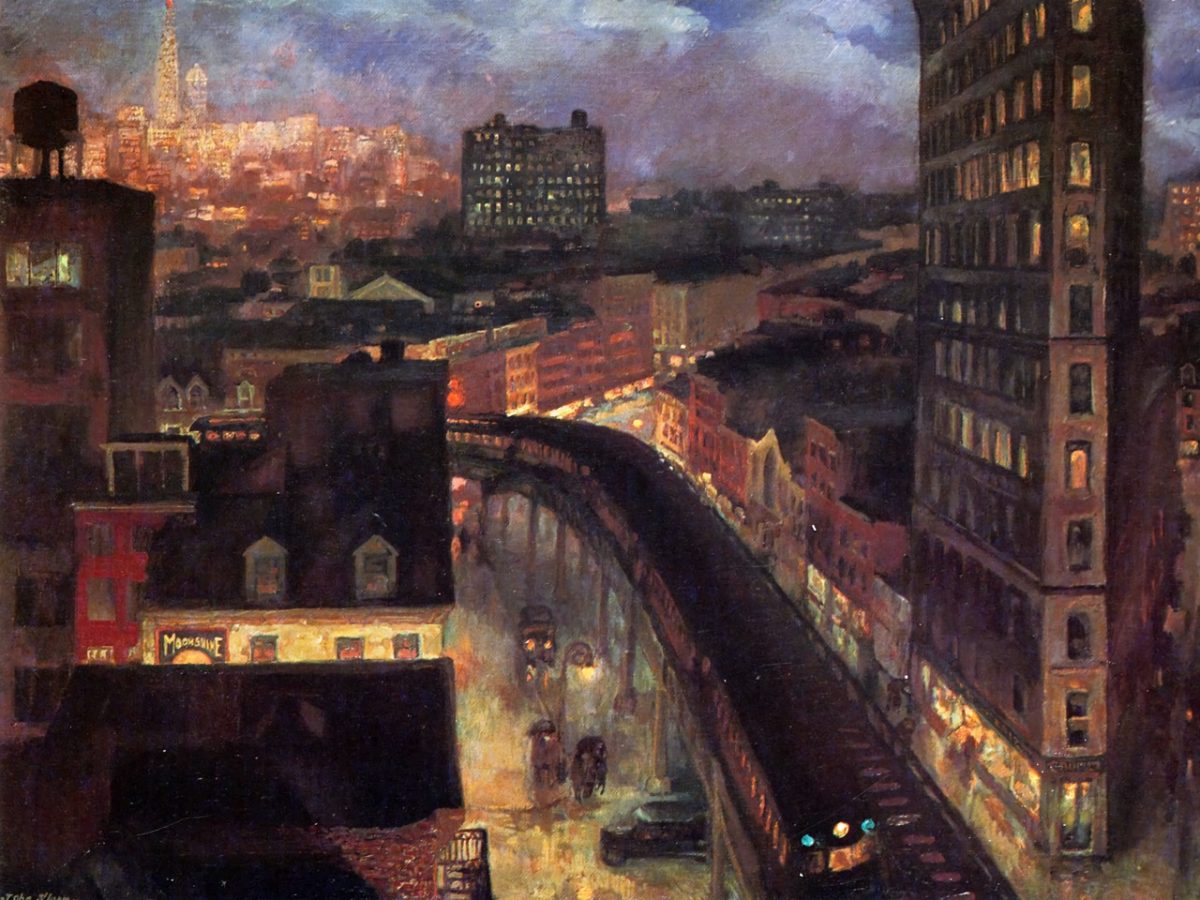
The City from Greenwich Village – John Sloane – 1922

Chinese Restaurant – John French Sloan – 1909
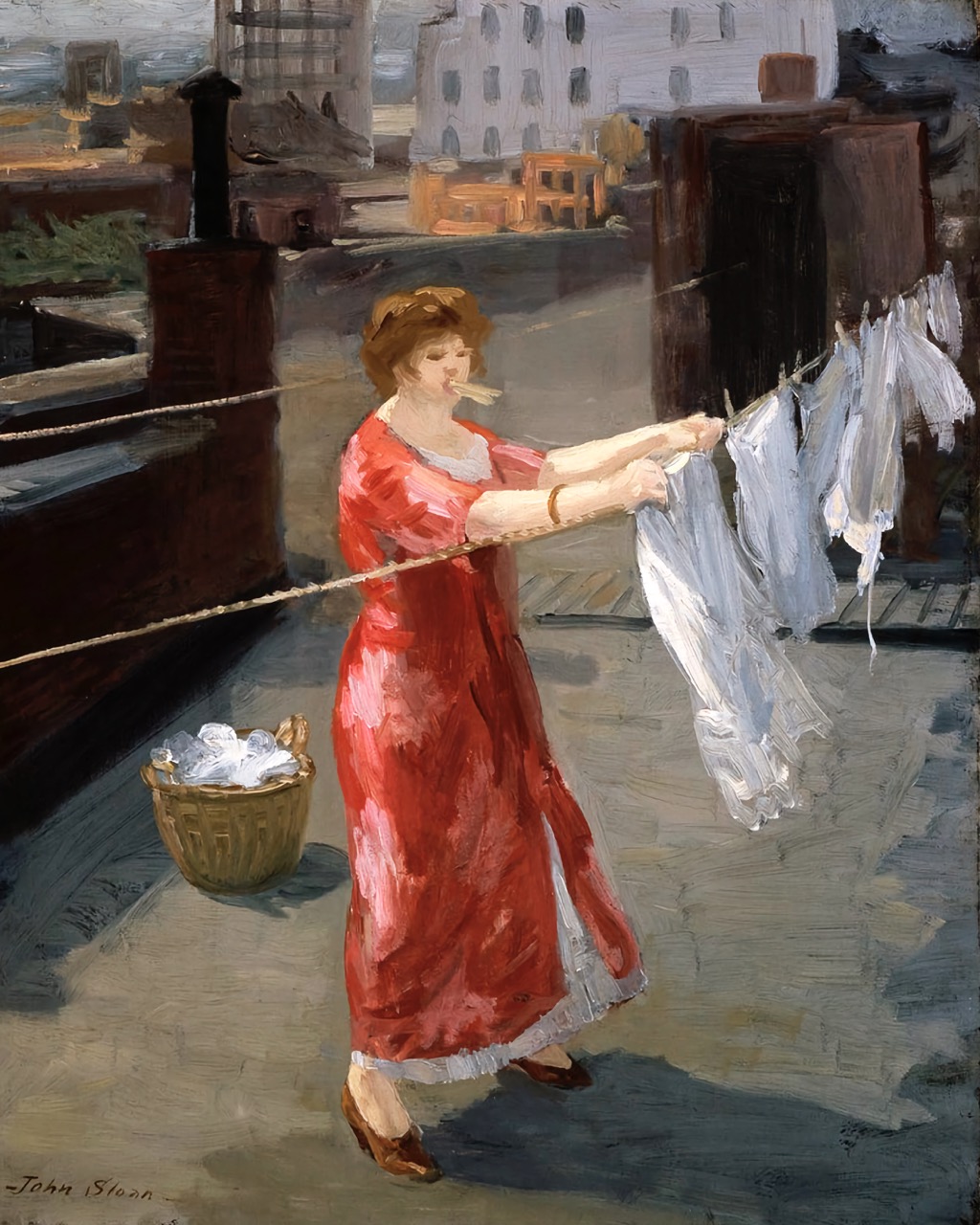
Red Kimono on the Roof – John Sloan – 1912
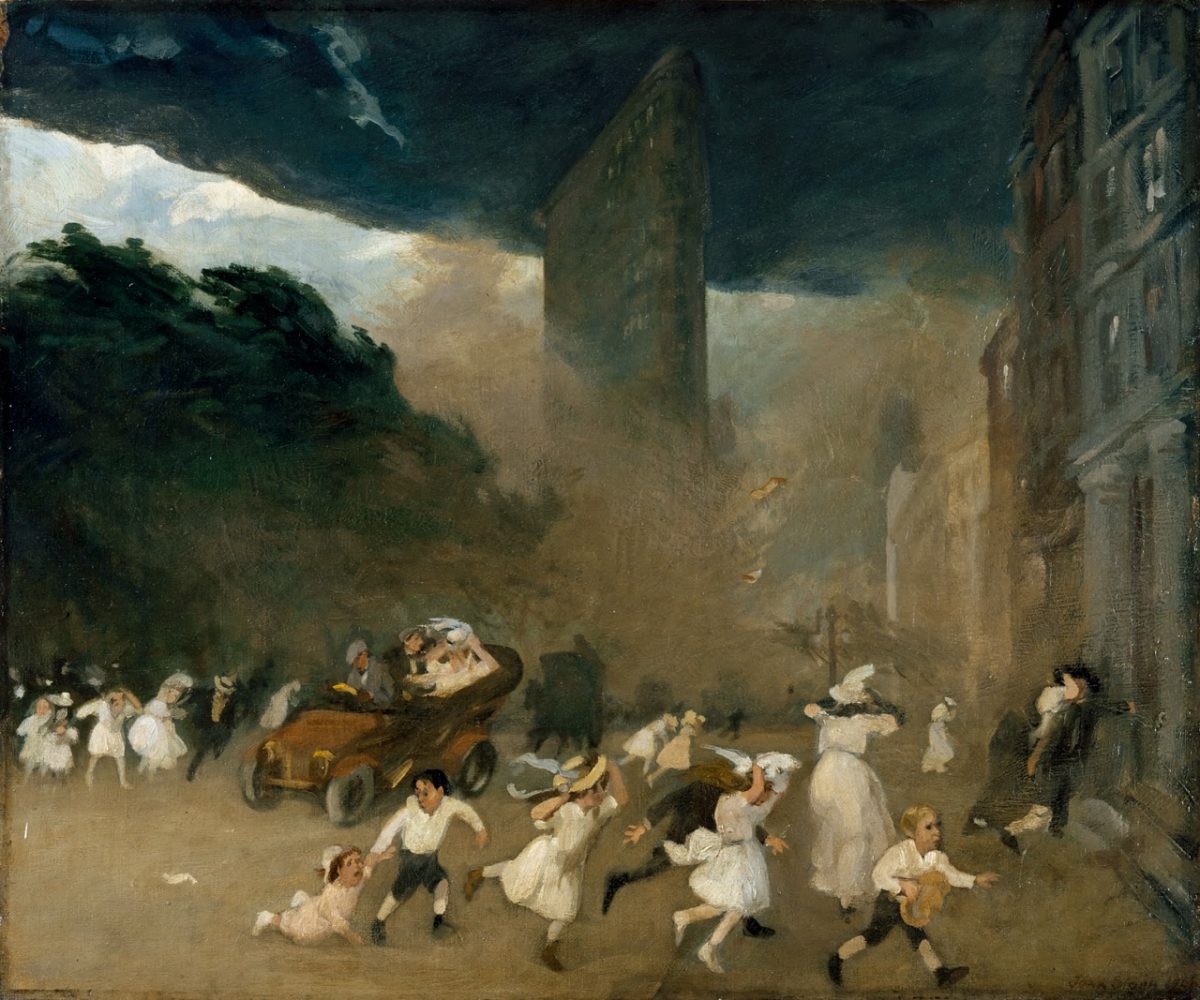
Dust Storm, Fifth Avenue – John Sloan – 1906
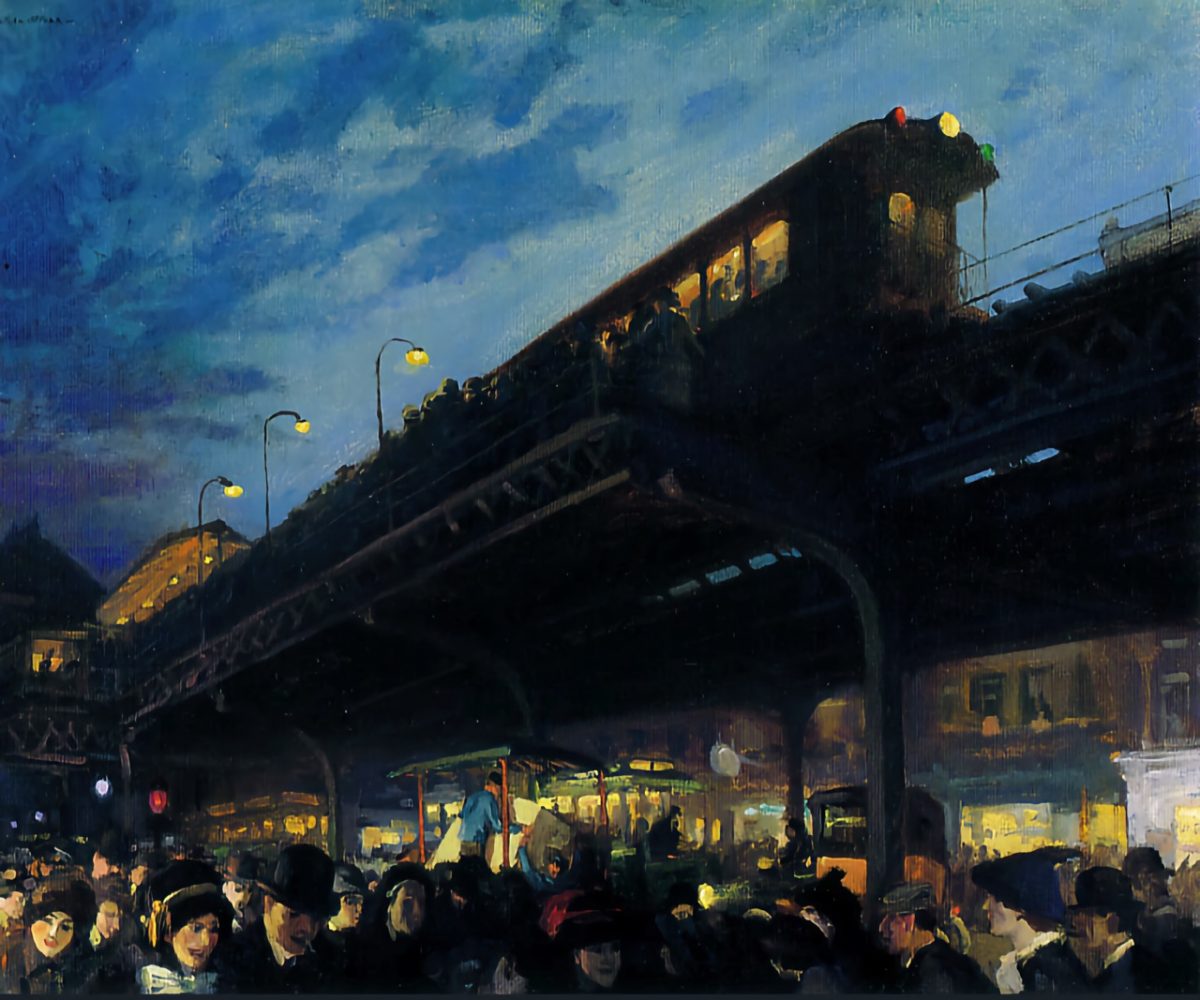
Six O’Clock, Winter – John Sloan – 1912
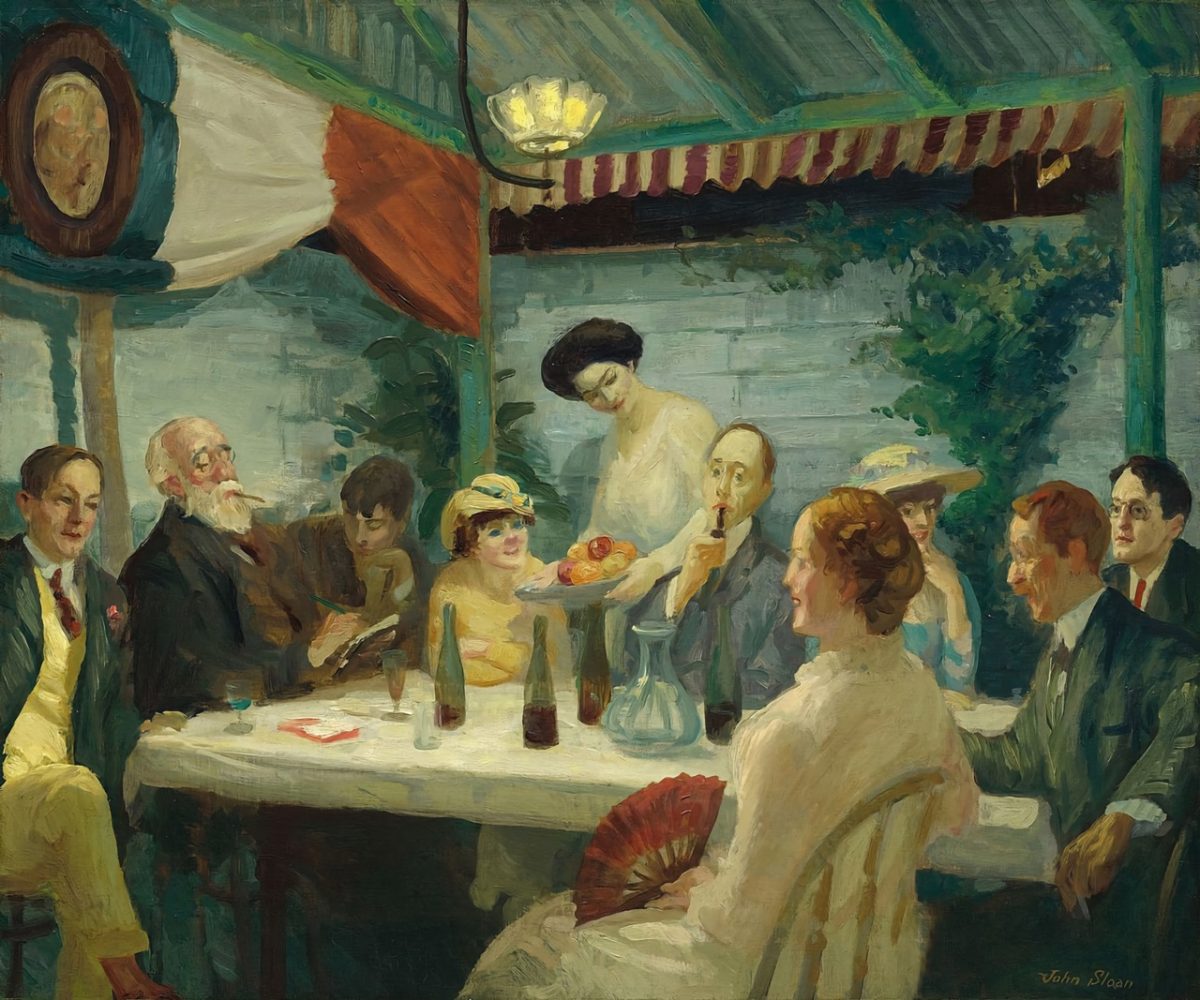
Yeats at Petitpas’ – John Soane – 1910-1914
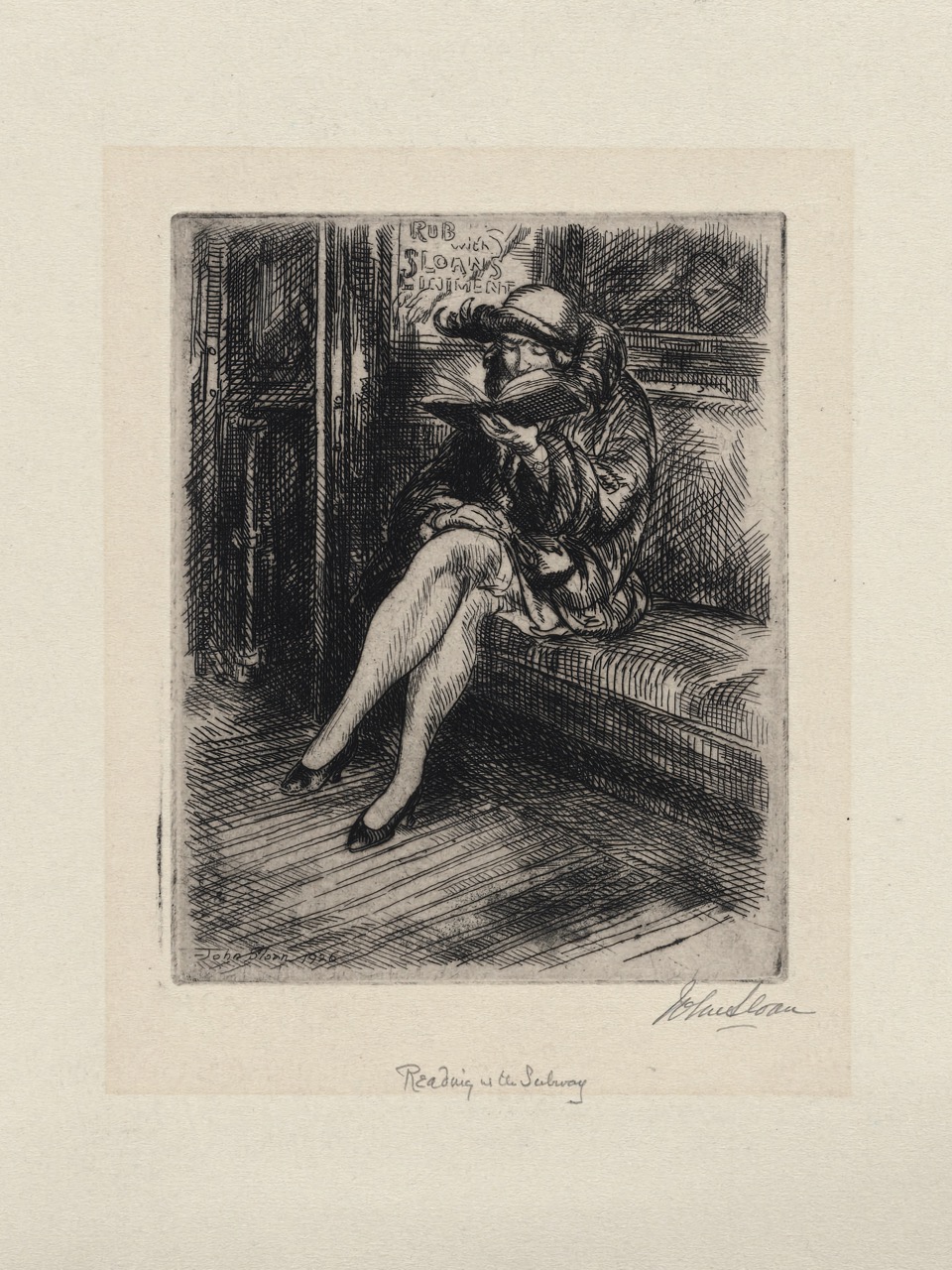
John Sloan – Reading in the Subway – 1926
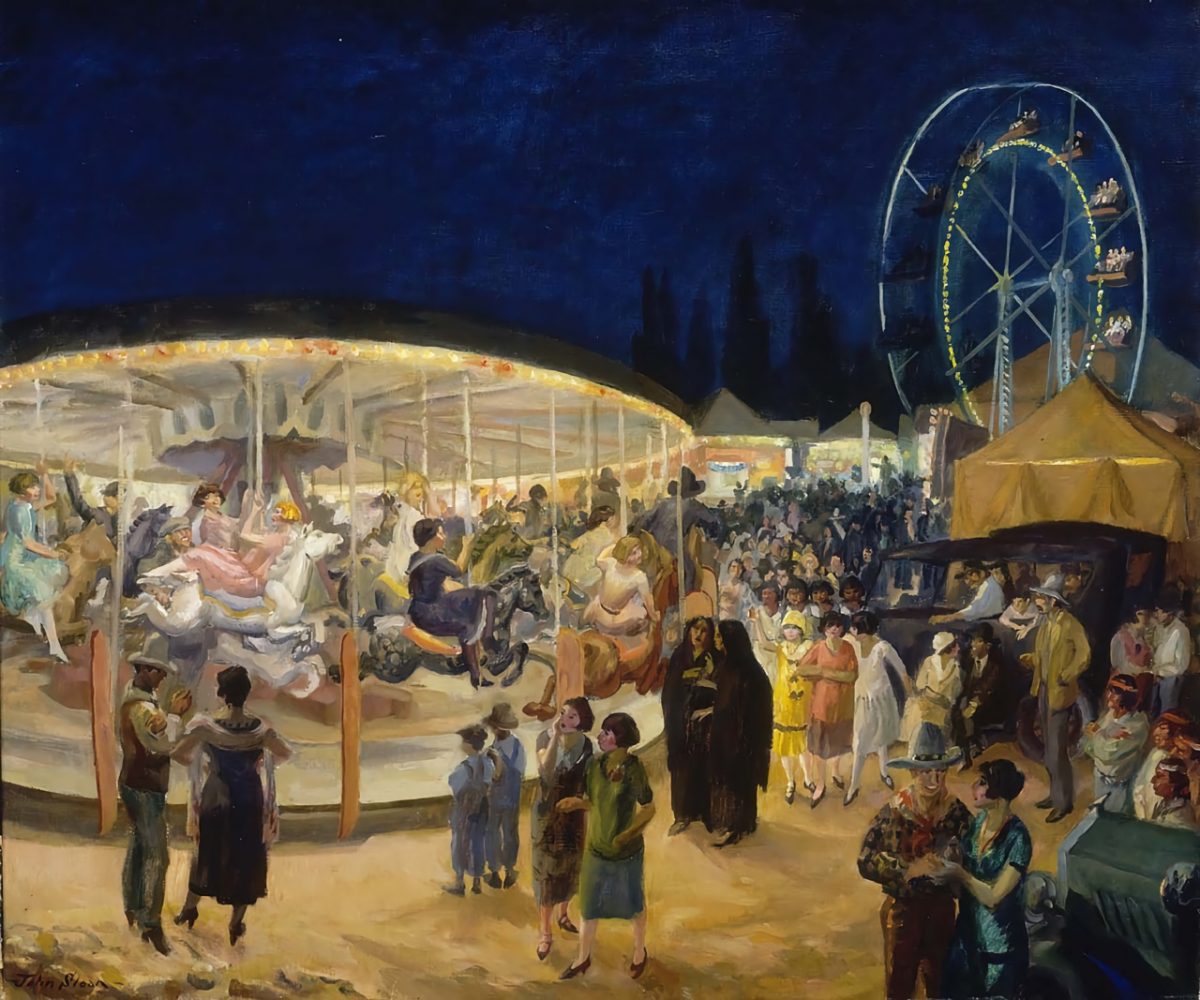
Travelling carnival Santa Fe – John Sloan – 1934
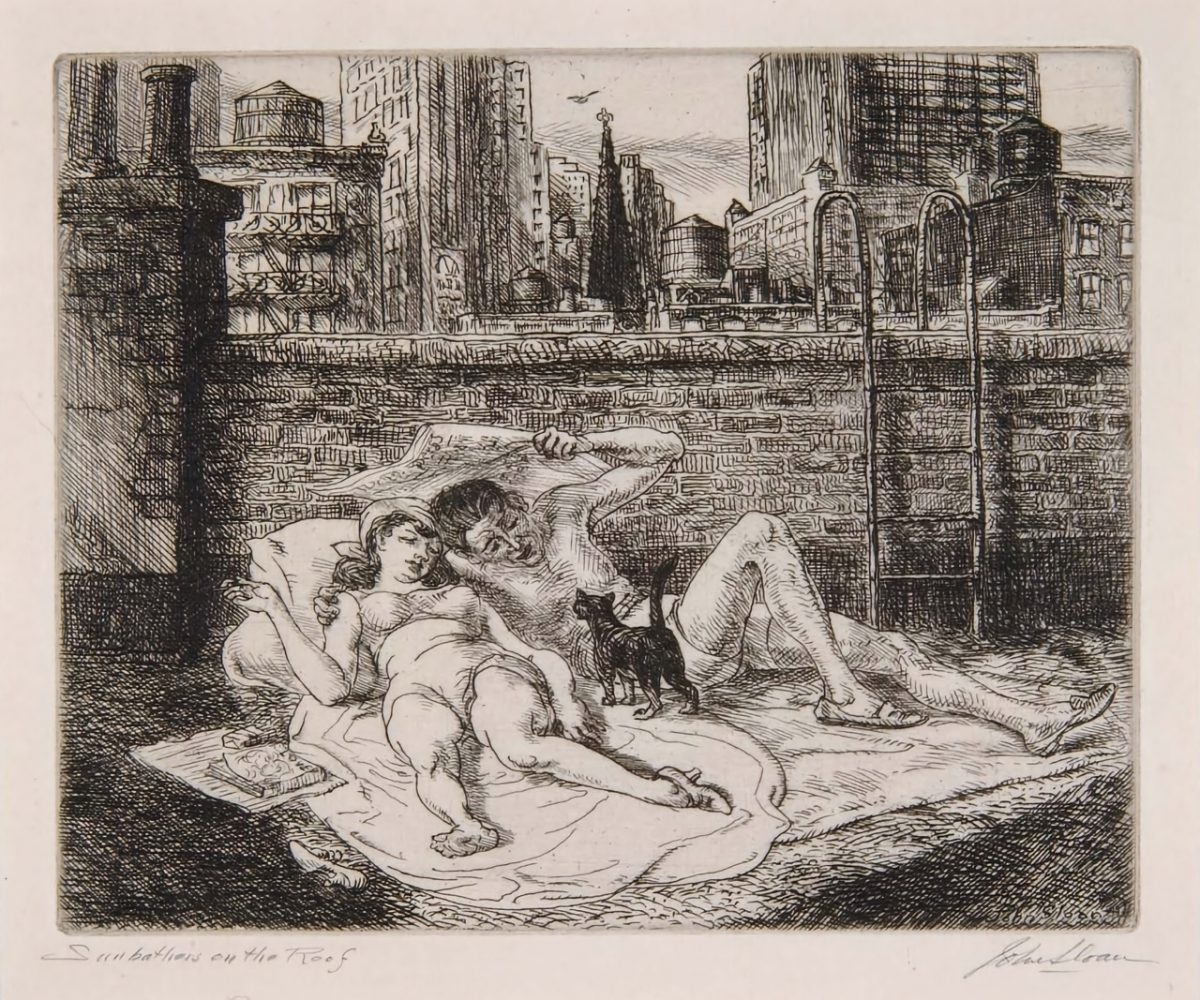
Sunbathers on the roof – John Sloan – 1941
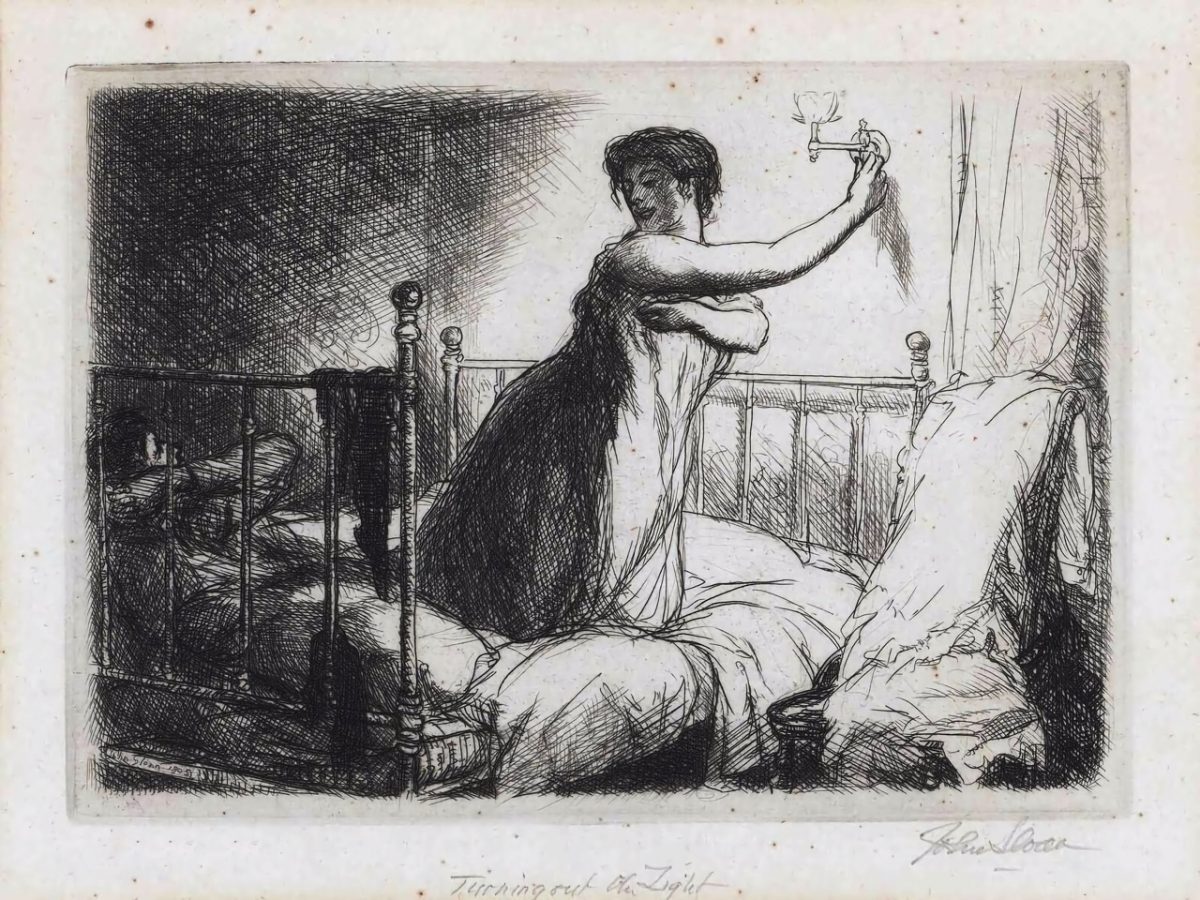
Turning Out the Light, from New York City Life – John Sloan – 1905
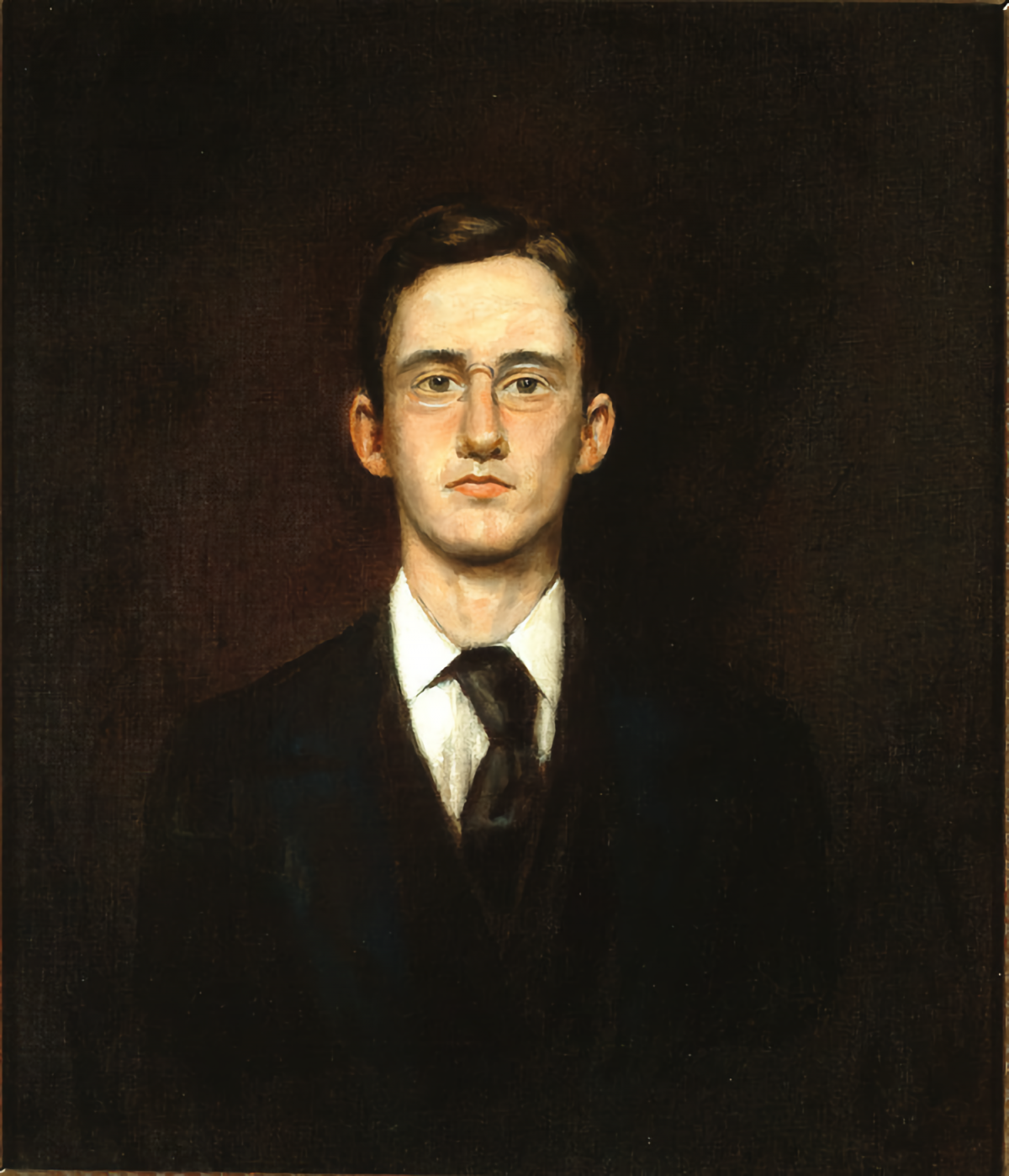
Self-portrait, 1890
John Sloan prints and more are available in the Flashbak Shop – HERE.